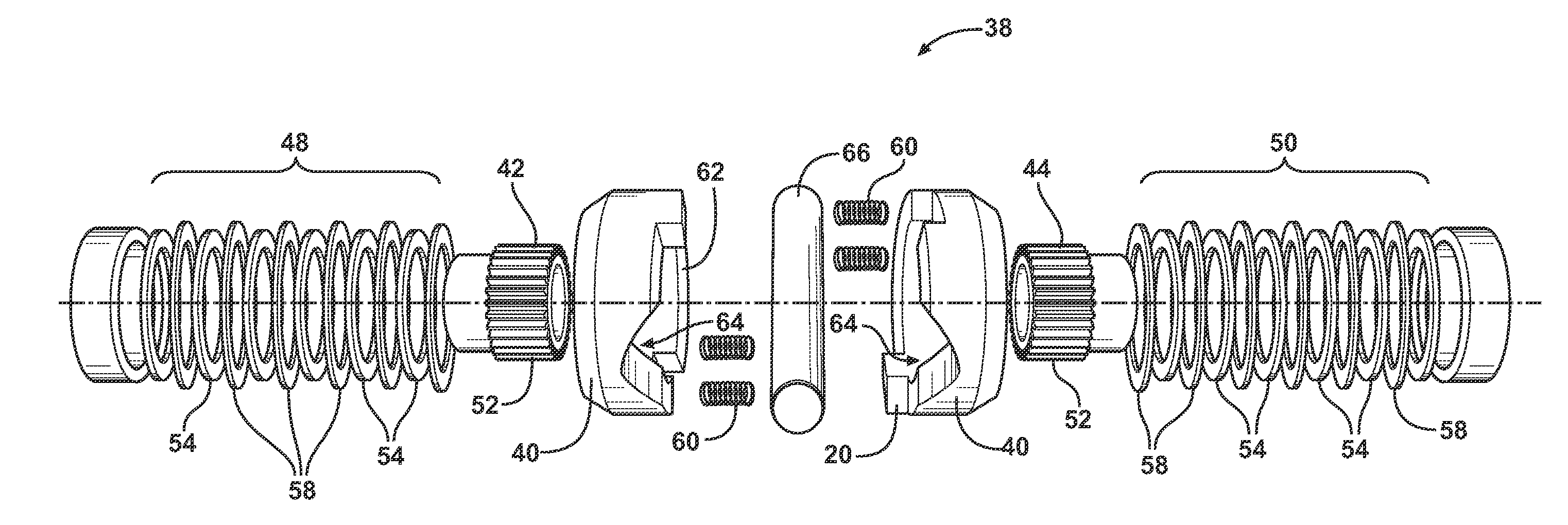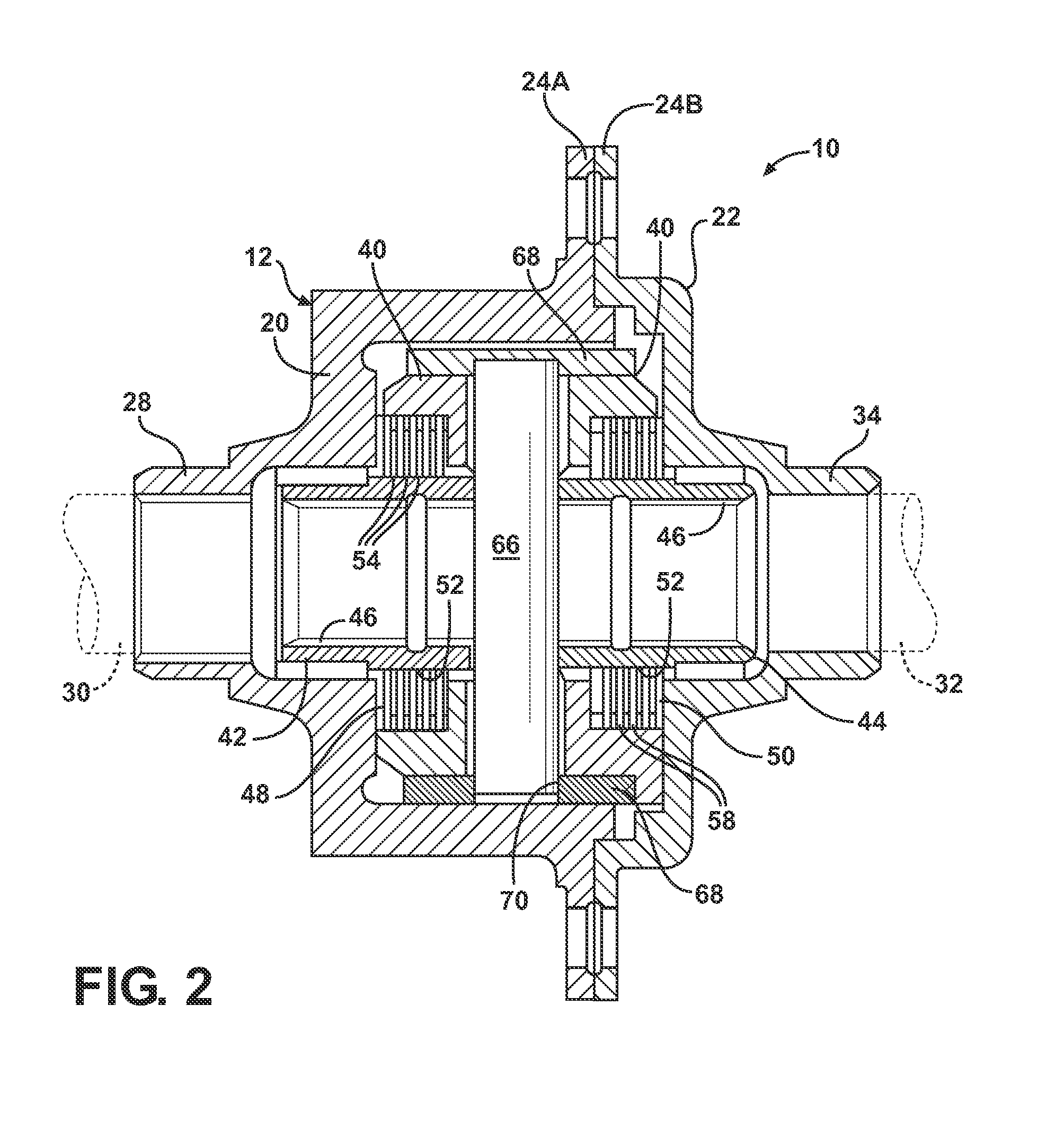Differential having improved torque capacity and torque density
a technology applied in mechanical equipment, transportation and packaging, gearing, etc., can solve the problems of increasing the cost of a differential for the given amount of torque capacity and density, and achieves less resistance in movement, smoother differential operation, and reduced shock.
- Summary
- Abstract
- Description
- Claims
- Application Information
AI Technical Summary
Benefits of technology
Problems solved by technology
Method used
Image
Examples
Embodiment Construction
[0016]One embodiment of a locking differential of the type contemplated by the present invention is generally indicated at 10 in FIGS. 1-2. The locking differential 10 is designed to be employed as a part of a drive train for any number of vehicles having a power plant that is used to provide motive force to the vehicle. Thus, the differential 10 includes a housing, generally indicated at 12. The housing 12 may support a ring gear 14 that is designed to be driven in meshing relationship with the pinion gear 16 fixed to a drive shaft 18. The ring gear 14, pinion 16 and driveshaft 18 are shown in phantom in FIG. 1. The housing 12 may be composed of a main body 20 and a cap 22 that is fixedly mounted to the main body 20 at a pair of mating annular flange portions 24A and 24B via bolts 26 or any other suitable fastening mechanism. The ring gear 14 may also be mounted to the housing 12 at the mating flanges 24A, 24B via the fastener 26. Those having ordinary skill in the art will appreci...
PUM
 Login to View More
Login to View More Abstract
Description
Claims
Application Information
 Login to View More
Login to View More - R&D
- Intellectual Property
- Life Sciences
- Materials
- Tech Scout
- Unparalleled Data Quality
- Higher Quality Content
- 60% Fewer Hallucinations
Browse by: Latest US Patents, China's latest patents, Technical Efficacy Thesaurus, Application Domain, Technology Topic, Popular Technical Reports.
© 2025 PatSnap. All rights reserved.Legal|Privacy policy|Modern Slavery Act Transparency Statement|Sitemap|About US| Contact US: help@patsnap.com



